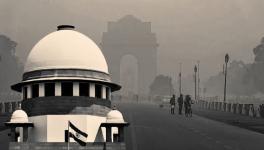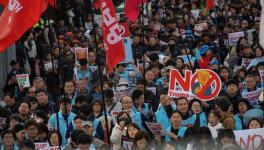What India Should Learn from Beijing’s Fight Against Air Pollution
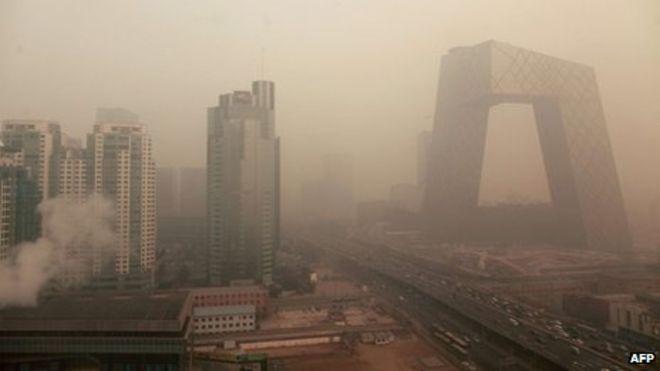
Image Courtesy: BBC
Till a few years back, Beijing was reeling under the same problem that has been afflicting Northern India, especially the national capital of Delhi, for quite some time now. During winter, Beijing’s sky would also be veiled by a thick cover of smog. However, the Chinese capital has significantly improved the quality of air over the last 20 years in a phase-wise manner. Even a UN report titled “A Review of 20 years’ Air Pollution Control in Beijing” declared that Beijing’s model of fighting air pollution can be a model for any other country.
“This improvement in air quality didn’t happen by accident. It was the result of an enormous investment of time, resources and political will. Understanding Beijing’s air pollution story is crucial for any nation, district or municipality that wishes to follow a similar path,” said Joyce Msuya, Acting Executive Director of UN Environment. The report was jointly compiled by UN Environment and the Beijing Municipal Ecology and Environment Bureau (BEE).
According to He Kebin, the principal author of the report and Dean of Tsinghua University’s School of Environment, the city’s air quality progressed between 1998 to 2013, but more significant improvements took shape under the Clean Air Action Plan 2013-2017.
India, which is facing a similar situation now, however, lacks in terms of a comprehensive strategy. The more it is delayed, the more its populations will suffer from the bulging pollution. In this regard, can Delhi adopt something from the strategy that Beijing implemented?
Beijing’s Pollution Control Strategies
Compared with 20 years earlier, the GDP, population and vehicles of Beijing sharply increased by 1078%, 74% and 335%, respectively at the end of 2017. The economic growth and urbanisation also led to heavy air pollution. The main contributors to this were the coal-based industries as well as vehicular emissions. To tackle this menace, Beijing launched comprehensive air pollution control programs in phases since 1998. Following this, on-ground observation data shows that the annual average concentrations of SO2, NO2 and PM10 decreased by 93.3%, 37.8% and 55.3%, respectively.
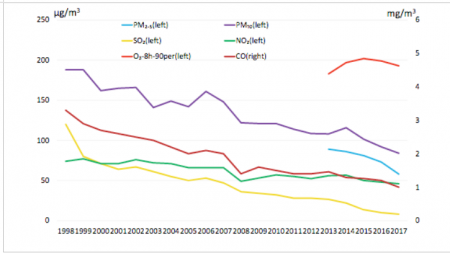
Changes in annual average concentrations of air pollutants in Beijing, 1998-2017
Effective Air Quality Management System: Beijing was able to adopt a very effective air quality management system characterised by (a) Complete legislation and enforcement mechanism; (b) Systematic planning; (c) Powerful local standards; (d) Strong monitoring capacity; (e) High public environmental awareness
Economic Incentives and Financial Measures: Through huge investments in curbing air pollution and adopting environmental-economic policies, the city showed high motivation and ambition for tackling air pollution. These included subsidies, fees pricing and other financial practices to provide economic incentives for effective implementation of various measures.
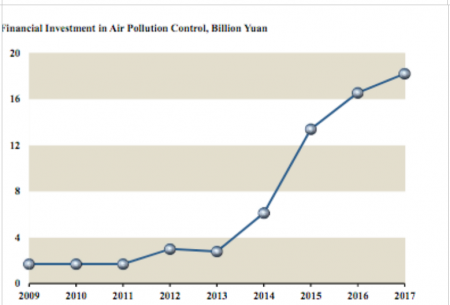
Emission Reduction from Coal Combustion Sources: The coal-fired power plants were a huge contributor to air pollution in Beijing. Since 2005, Beijing implemented coal to gas policy and reduced coal combustion by nearly 11 million tons by 2017. High efficiency terminal treatment facilities were renovated continuously and along with that, ultra low emission standards were enforced during this period. Year 2017 witnessed reduction in emissions of PM2.5, SO2, and NOx by 97%, 98% and 86%, respectively compared with 20 years earlier resulting in significant environmental and health benefits.

Changes of major pollutants emission from coal-fired power plants in Beijing, 1998-2017
Vehicle Emission Control: Vehicular emissions were a major problem in Beijing as well. To fight that, Beijing implemented series of local emission standards and comprehensive measures along with traffic management and economic incentives continuously.
An integrated “Vehicle-Fuel-Road” framework was worked out. Most importantly, a large scale public transport system was built to gradually develop a green and low carbon emitting travel habit among the city’s population.
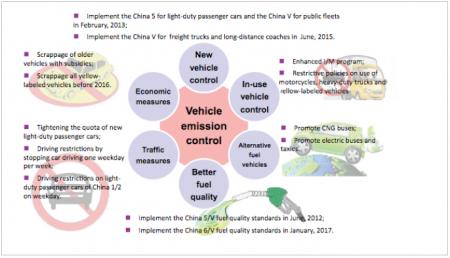
Vehicle-fuel-road integrated control system
Despite manifold increase in vehicles in Beijing during the last two decades, the total pollutant emissions decreased remarkably. Compared with 1998, CO, THC, NOx and PM2.5 emissions from the transportation sector were reduced by nearly 1,105kt, 94kt, 71kt and 6kt in 2017. This amounts to a decrease rate of 89%, 64%, 55% and 81%, respectively. The significant contributor in emission reduction during this period was phasing out older vehicles.
Intensive Pollution Control During 2013-2017
The “Beijing 2013-2017 Clean Air Action Plan” signifies the most comprehensive and systematic air pollution control programme of Beijing. This effort led to a notable improvement of air quality and a significant decrease in the numbers of severe pollution days in a year.
By the end of the programme in 2017, Beijing’s annual average PM2.5 concentration lowered by 35 % to a level of 58μg/m3 . The achievement of this goal of air quality improvement had been considered very difficult prior to this. During this period, the other pollutants such as sulphur, nitrogen and other toxic oxides also sharply declined. Control of coal-fired boilers, clean fuels in residential areas and optimisation of industrial structure were some of the measures that helped Beijing achieve its goals of reducing air pollution.
Lessons for India
The major sources of air pollution in India today are very similar to those in Beijing. Delhi’s major air pollution sources are vehicular emissions and road dust along with industrial emissions. Vehicular emissions alone amount to 40% of the city’s pollution. In addition to all these, the transient stubble burning also contributes heavily to Delhi and major North Indian cities. The coal-fired power plants are also responsible to a great extent that give rise to pollutants residing in the air for long.
Hence, the measures adopted by Beijing to fight the increasing pollution levels in the city, could also be a great help for India. In order to fight this issue, the primary initiatives have to come from the Central Government to design a comprehensive plan and its strict implementation.
Get the latest reports & analysis with people's perspective on Protests, movements & deep analytical videos, discussions of the current affairs in your Telegram app. Subscribe to NewsClick's Telegram channel & get Real-Time updates on stories, as they get published on our website.













